Diptera.info :: Identification queries :: Diptera (adults)
Who is here? 1 guest(s)
Page 1 of 2: 12
|
|
UK Tachinidae Phryxe heraclei
|
|
| sd |
Posted on 07-01-2011 20:45
|
|
Member Location: Suffolk, UK Posts: 892 Joined: 11.10.07 |
UK, Suffolk, 2km from coast. 27.iv.09 approx 7mm I think this is Phryxe heraclei, (double row of ventral bristles on costal vein, see below). Steve sd attached the following image: 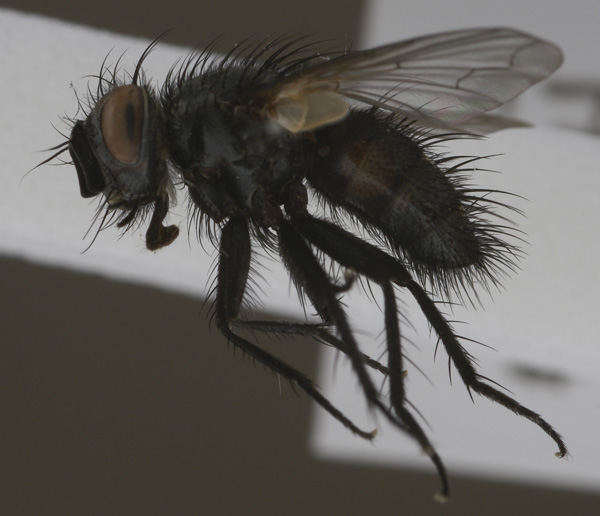 [97.96Kb] |
|
|
|
| sd |
Posted on 07-01-2011 20:46
|
|
Member Location: Suffolk, UK Posts: 892 Joined: 11.10.07 |
...
sd attached the following image: 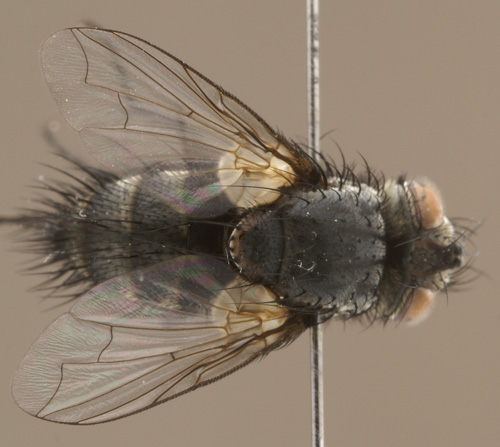 [90.33Kb] |
|
|
|
| sd |
Posted on 07-01-2011 20:46
|
|
Member Location: Suffolk, UK Posts: 892 Joined: 11.10.07 |
...
sd attached the following image: 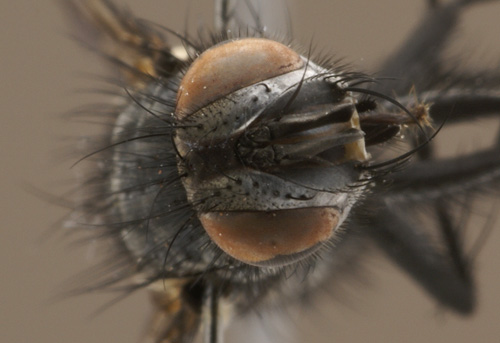 [73.77Kb] |
|
|
|
| sd |
Posted on 07-01-2011 20:47
|
|
Member Location: Suffolk, UK Posts: 892 Joined: 11.10.07 |
...
sd attached the following image:  [94.58Kb] |
|
|
|
| sd |
Posted on 07-01-2011 20:47
|
|
Member Location: Suffolk, UK Posts: 892 Joined: 11.10.07 |
...
sd attached the following image: 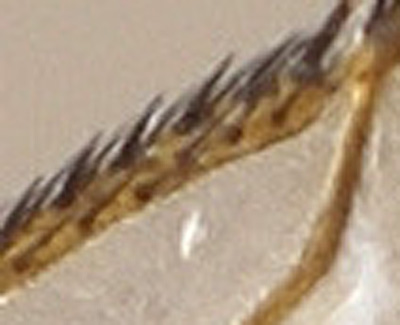 [56.76Kb] |
|
|
|
| ChrisR |
Posted on 07-01-2011 21:04
|
|
Administrator Location: Reading, England Posts: 7699 Joined: 12.07.04 |
You have to be a bit careful using Belshaw because he describes the wrong vein but figures the correct bit. Go by figure #394, which I believe should have been called something like "the section of the costa between SC and r1" - I think your photos are focused on the section of the costa before SC. But in the top right of the first wing it does look as though the correct bit of wing has the extra hairs ... so you may be right 
Manager of the UK Species Inventory in the Angela Marmont Centre for UK Biodiversity at the Natural History Museum, London. |
| Zeegers |
Posted on 07-01-2011 21:10
|
|
Member Location: Soest, NL Posts: 18518 Joined: 21.07.04 |
I'm not sure, but from general picture general impression is not heraclei. It is a male, why not extract its genitalia ? Difference is obvious then. Theo |
|
|
|
| ChrisR |
Posted on 07-01-2011 21:13
|
|
Administrator Location: Reading, England Posts: 7699 Joined: 12.07.04 |
Ahh, just a thought - are you looking on the dorsal or ventral face of the wing? As Theo said, genitalia are very clear. Come to think of it I think most of my P.heraclei have small, reddish abdominal side patches. Manager of the UK Species Inventory in the Angela Marmont Centre for UK Biodiversity at the Natural History Museum, London. |
| sd |
Posted on 07-01-2011 21:39
|
|
Member Location: Suffolk, UK Posts: 892 Joined: 11.10.07 |
ok Chris, I see the part of the vein you mean. I should have realised from your update notes to Belshaw, available on your website. So maybe it isn't heraclei afterall. YES, its the ventral side. Theo, I cannot argue with your logic apart from to say I'm processing photos of dried flies in batches and therefore refer you to the works of Adam Smith et al and the idea of "Division of Labour"  Best Regards, Steve sd attached the following image: 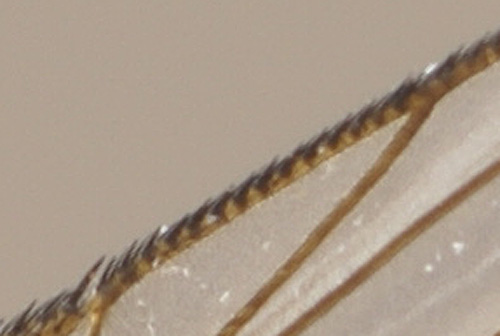 [62.38Kb] |
|
|
|
| ChrisR |
Posted on 07-01-2011 22:30
|
|
Administrator Location: Reading, England Posts: 7699 Joined: 12.07.04 |
OK, to me the correct area of the wing is now being looked at and it does have the necessary minute hairs. If I remember the key correctly you only look for hairs if you are happy that it is not P.nemea and this one has a blue/grey parafrontal so it shouldn't be P.nemea ... and looking back at photo 1 there do appear to be orange/brown abdominal side patches so ... male genitalia aside ... to me this looks fairly like P.heraclei but I would still recommend putting in the extra work to prove it by relaxing the specimen and hooking the genitalia out  P.heraclei is the third commonest Phryxe spp. in Britain, in my experience - followed by magnicornis & erythrostoma (both of which are very rare) Edited by ChrisR on 07-01-2011 22:33 Manager of the UK Species Inventory in the Angela Marmont Centre for UK Biodiversity at the Natural History Museum, London. |
| Zeegers |
Posted on 08-01-2011 11:51
|
|
Member Location: Soest, NL Posts: 18518 Joined: 21.07.04 |
whatever it is, it is not nemea. Magnicornis is another matter, in my opinion Theo |
|
|
|
| sd |
Posted on 08-01-2011 21:37
|
|
Member Location: Suffolk, UK Posts: 892 Joined: 11.10.07 |
ok, here's the extraction. I think the oval surstylus confirms heraclei? Steve sd attached the following image: 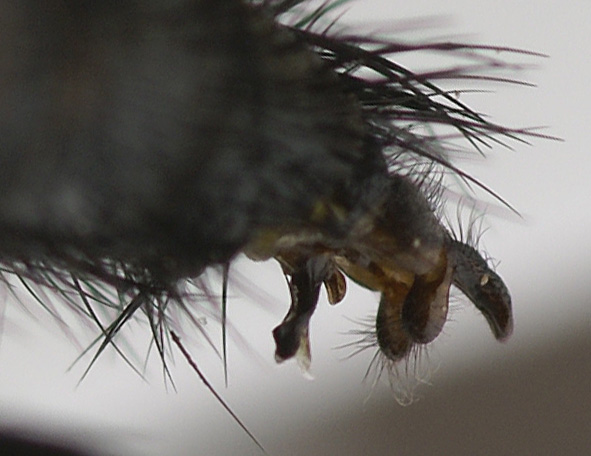 [106.4Kb] |
|
|
|
| neprisikiski |
Posted on 08-01-2011 21:44
|
|
Member Location: Lithuania Posts: 876 Joined: 23.02.09 |
Phryxe vulgaris 
Edited by neprisikiski on 08-01-2011 21:45 Erikas |
|
|
|
| sd |
Posted on 08-01-2011 21:49
|
|
Member Location: Suffolk, UK Posts: 892 Joined: 11.10.07 |
I'm on a steep learning curve |
|
|
|
| ChrisR |
Posted on 08-01-2011 23:10
|
|
Administrator Location: Reading, England Posts: 7699 Joined: 12.07.04 |
Not sure - looks a bit P.heraclei to me - can we see it from a purely lateral angle? 
Manager of the UK Species Inventory in the Angela Marmont Centre for UK Biodiversity at the Natural History Museum, London. |
| sd |
Posted on 09-01-2011 12:01
|
|
Member Location: Suffolk, UK Posts: 892 Joined: 11.10.07 |
ok, 2 more photos. I folded the cercus back initially to have a clear view of the surstylus, as I thought that was important for the key, so apologies for the photos differing from a text book diagram. I don't have other specimens for comparison but the surstylus looks more like the diagrams of heraclei in both Belshaw's key and Tschorsnig and Herting's key. The cercus does appear to have a ventral apex under the microscope, its flattened a little by perspective in the photo. There are certainly a few ventral hairs on the Costal vein as described for heraclei in Belshaw. So I am tentatively placing an id of heraclei ( I don't need it to be such, by the way, just looking for an accurate id  ) )Thank you to Chris and others for comments.Thank you to Theo for making me go to the trouble of relaxing and preparing and further photographing the specimen. I have learnt much and hopefully this thread will be helpful in the future when others have pinned Phryxe to be identified. Steve sd attached the following image:  [108.63Kb] |
|
|
|
| sd |
Posted on 09-01-2011 12:02
|
|
Member Location: Suffolk, UK Posts: 892 Joined: 11.10.07 |
... |
|
|
|
| sd |
Posted on 09-01-2011 12:04
|
|
Member Location: Suffolk, UK Posts: 892 Joined: 11.10.07 |
...
sd attached the following image:  [50.6Kb] |
|
|
|
| ChrisR |
Posted on 09-01-2011 15:05
|
|
Administrator Location: Reading, England Posts: 7699 Joined: 12.07.04 |
Yeah, to me that's P.heraclei 
Manager of the UK Species Inventory in the Angela Marmont Centre for UK Biodiversity at the Natural History Museum, London. |
| Zeegers |
Posted on 09-01-2011 17:59
|
|
Member Location: Soest, NL Posts: 18518 Joined: 21.07.04 |
Yes, I'd say it is heraclei after all. Theo |
|
|
|
Page 1 of 2: 12
| Jump to Forum: |









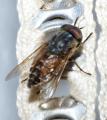
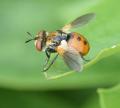



 but don't see the image in the post.
but don't see the image in the post.